Testimonials are one of those timeless tactics that still work—because real customer stories cut through noise and skepticism.
They reassure potential buyers that your product or service delivers on its promises by showing proof from people like them.
On our own site, visitors who spend time with testimonials consistently convert at much higher rates—often more than twice as likely to become a lead compared to those who don’t view them.
And once they convert, leads who engaged with testimonials tend to become paying customers at far higher rates, too.
So, how do you get strong testimonials—and use them in a way that actually moves the needle?
Below you’ll find a quick infographic plus seven practical tips to collect and deploy testimonials the right way—so they build trust, remove friction, and drive measurable results.
How to use testimonials the right way
When you use testimonials with care and context, they can do wonders for your business. They don’t just look nice—they help people decide, faster and with more confidence.

The core job of a testimonial is credibility. Great ones demonstrate real outcomes, expertise, and customer experience—so prospects feel safe taking the next step. Done well, they can meaningfully lift the percentage of visitors who become customers.
Before we get into best practices, here’s the quickest way to undermine all of this.
Don’t create fake testimonials.
The biggest mistake is publishing testimonials that aren’t genuine or can’t be verified. Not only are they unbelievable, they can permanently damage trust if you’re called out.
You’re better off with no testimonials than fake ones. If your product or service delivers, real customers will share real wins—especially if you make it easy to do and ask permission to use their words.
With that out of the way, here’s our blueprint for creating persuasive, conversion-focused testimonials that hold up to scrutiny.
We’ll cover the fundamentals and add angles you might not be using yet.
Let’s dig in.
1. Use images
No need for a long lecture here: authentic visuals make testimonials feel human and real.
It’s one of the first best practices you’ll hear for a reason—faces, logos, and contextual photos increase connection and attention.
Images are a critical element: use a real headshot, name, job title, and company logo where possible. Avoid stock photos; aim for honest, well-lit, permission-granted images.
In short:
Many marketing leaders consider visual assets essential for telling a brand’s story—and testimonials are no exception.

Beyond polish, carefully chosen visuals can increase perceived “truthiness”—that intuitive sense that a claim is credible—especially when paired with concrete details.
That’s exactly what you want when you’re trying to build a connection and persuade someone to act.
2. Include specifics
We’re data people.
And prospects are, too, when they’re making a high-stakes decision. Specifics make benefits tangible.
Whenever you can, include concrete numbers and timeframes: revenue added, costs reduced, hours saved, percentage lifts, and how long it took. Add the segment (“enterprise ecommerce,” “SaaS with self-serve”), so readers can see themselves in the story.
Don’t rely on vague praise like “it’s great.” Turn it into clear outcomes—before/after snapshots, metrics, and a short description of what changed.
Here are examples of the kind of outcomes we feature because they answer the real question: “What result can I expect if I do this?”
There’s a simple reason we use these kinds of testimonials:
They work.
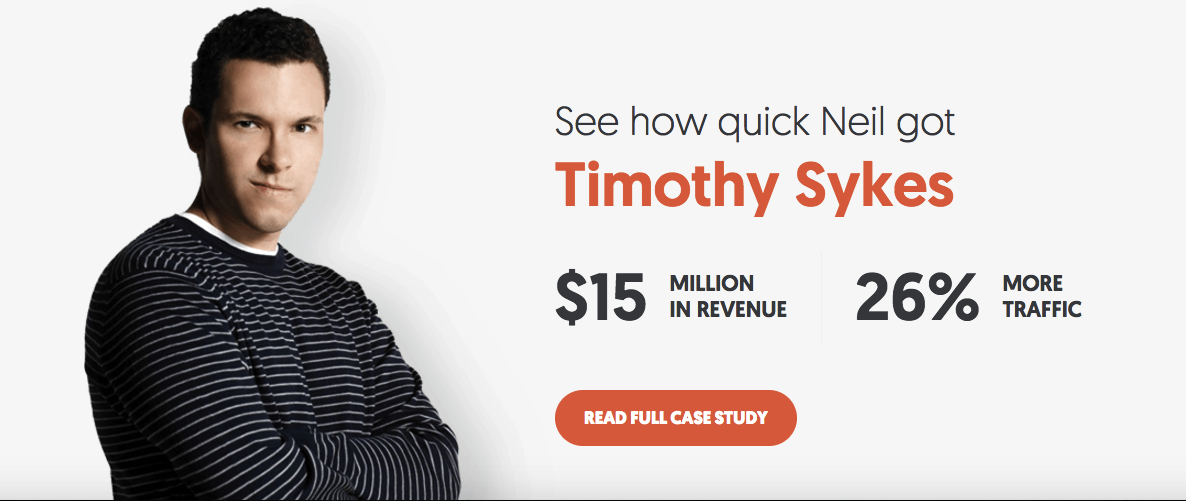
Seeing something like “$15 million in additional revenue and 26% more traffic in six months” is far more persuasive than a generic “they helped us a lot.”
Same idea here with Gawker Media:
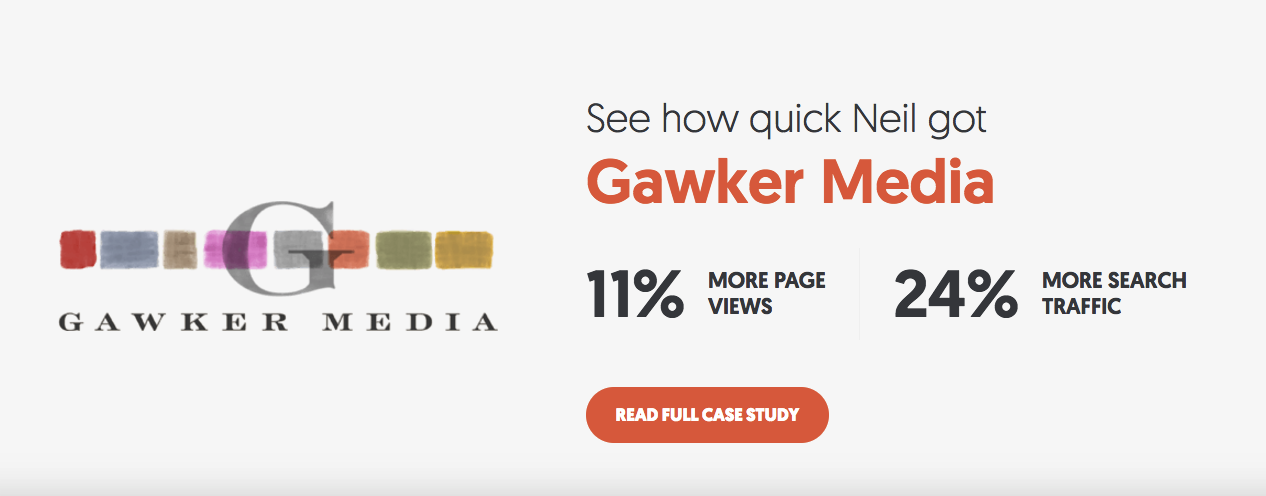
And here’s how FreshBooks anchors outcomes to a specific user story and timeframe:
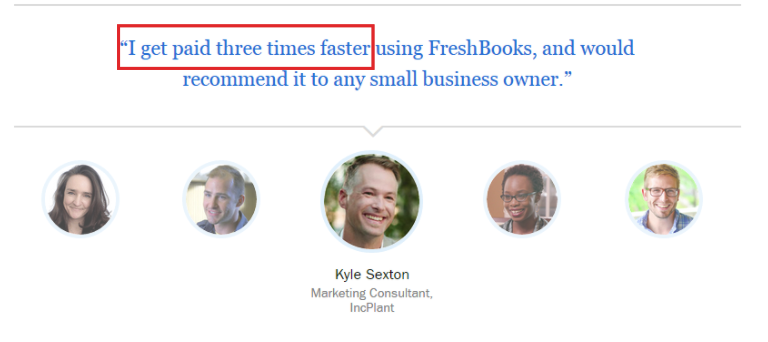
The goal is clarity: spell out what changed, by how much, and how quickly.
Prospects should be able to imagine the same outcome for themselves—without guesswork.
One more tip:
Avoid only using perfect round numbers (e.g., “20%”). Specific figures (“19.7%”) often feel more credible, and including a timeframe (“in 90 days”) adds context.
3. Show the good and the not-so-good
The most common mistake we see is publishing nothing but glowing praise. It looks curated to perfection—and people can sense it.
Yes, you want to present your brand in a positive light. But if every testimonial is 10/10 with no tradeoffs, it can trigger skepticism.
Cherry-picking only raves can hurt credibility. A representative mix is more believable and more useful for buyers trying to assess fit.
That’s because anyone can post a wall of praise. What stands out is honest feedback that highlights wins and addresses limitations or learning curves.
What people want most is authenticity.
They want to understand where your solution excels and where it isn’t a match.
Research over the years has consistently shown that a mix of positive and critical feedback tends to increase trust and purchase confidence compared to “all-perfect” reviews.
Put simply:
People trust reviews more when they see both pros and cons. When there’s only praise, many suspect filtering.
Think about your own behavior.
When you see a product with nothing but perfect 10s, do you feel confident—or do you start to wonder what you’re not seeing?
That’s a red flag for most of us.
This doesn’t mean featuring testimonials that slam your company.
It means embracing honest feedback and responding to it—showing how you handled issues and improved.
4. Make testimonials traceable
“Jack W. from Orlando” doesn’t inspire much confidence by itself.
Give readers a way to verify the person is real.
We’ve found it’s powerful to include details that can be checked: full name (or first name + last initial if privacy is a concern), job title, company, and—when permitted—a link to a website or profile.
Any credible destination works: a portfolio, company site, or social profile. The point is to show there’s a real person behind the words.
Another approach:
Create a short case study page from the testimonial—problem, process, result—so prospects can see the full story and context.
Here’s a nice example from Kissmetrics:

Clicking through lets prospects learn more about the company and the specific ways the tool improved performance—instantly boosting credibility.
We’ve used this tactic in-depth—like our case study with Timothy Sykes—to show how strategy translates into outcomes.
Here are a couple of screenshots:
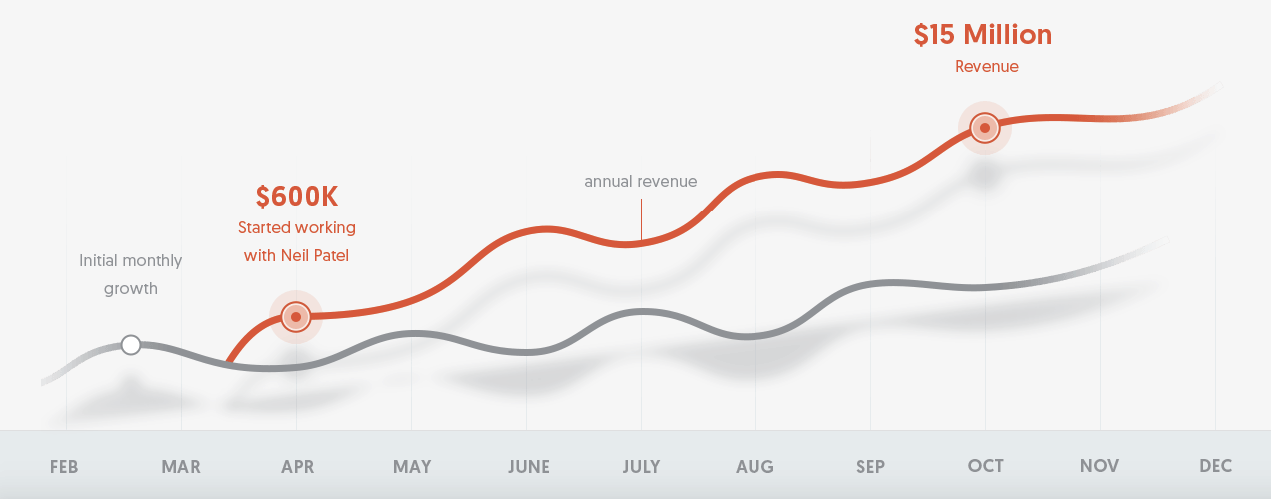

Making testimonials traceable has been a tremendous help for us—it attracts bigger, more serious buyers who value proof.
5. Target heavy hitters
We’ll preface this: it won’t be possible for every brand—especially early on.
But if you can land even one prominent voice in your niche—a respected founder, operator, or subject-matter expert—it can reshape how prospects perceive you.
Even a single “anchor” testimonial from a well-known customer can lift response rates across your site and sales materials.
Here’s a good example from Help Scout:
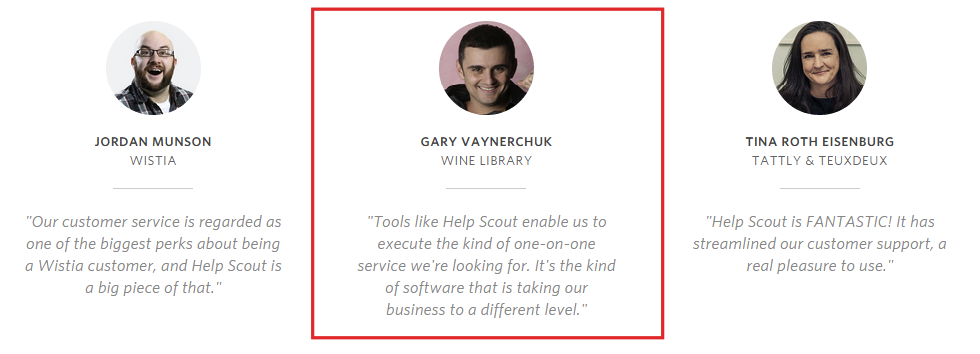
Gary Vaynerchuk is a major name—and that recognition transfers trust.
Here’s another example with Seth Godin:
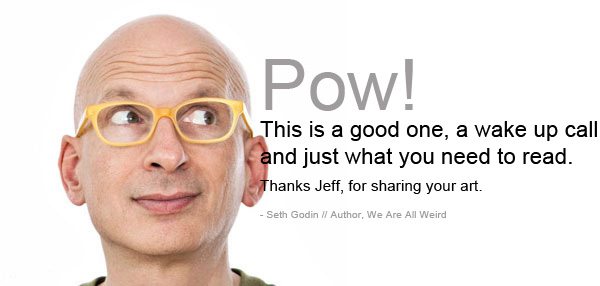
Imagine the impact of a respected figure validating your brand. One credible endorsement can open doors and shorten sales cycles.
If you’re aiming for these, start with people who already know your work (happy customers, advisors, partners) and make it easy for them to say yes.
For more ideas on landing authority testimonials, look for outreach frameworks that focus on value first and reduce the ask to a simple review or short quote.
6. Experiment with a long-form format
Standard advice says “keep it short.” That’s not always the winner.
Long-form testimonials can be more persuasive because they explain context: the problem, what changed, the outcome, and what the customer would tell someone on the fence.
They’re especially useful for complex products and higher-ticket decisions where buyers need detail to feel confident.
Why it works:
Long-form gives room for specifics and stories—multiple benefits, objections answered, and proof points that short quotes can’t carry.
One of our favorite examples is Noah Kagan’s landing page for the Make Your First Dollar course, which uses narrative testimonials to show transformation.
Here’s what we mean:
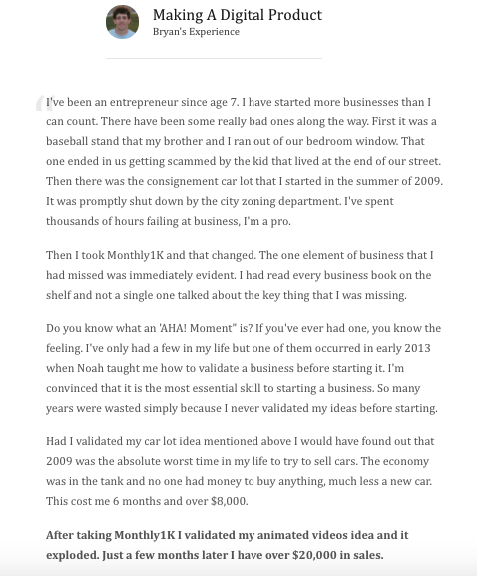
It’s in-depth and relatable—many readers can see their own situation in Bryan’s story, which makes the offer feel achievable.
Long-form won’t be right for every page, but it’s worth testing on product pages, sales pages, and emails where buyers need more assurance.
When competitors zig with short quotes, a thoughtful story can be the zag that sets you apart.
7. Experiment with video
Testimonials don’t have to be text.
There are no rules—use the medium your audience prefers.
Video is powerful because it’s harder to fake, conveys emotion, and shows personality. Short-form clips, quick Looms, or well-edited case stories all work.
And video is only getting stronger across channels.
Consider these enduring realities of video consumption and performance:
- People spend meaningful time each week watching short and long-form video on platforms like YouTube and social apps.
- Video has broad reach across demographics and devices, especially mobile.
- Marketers consistently rank video among the highest-ROI content formats when measured against goals like awareness, engagement, and conversions.
- Teams that add video to key pages often see faster comprehension and higher conversion rates versus text-only equivalents.
If you’re already succeeding with video elsewhere, fold it into testimonials—keep clips concise, add captions, and lead with the result.
Codecademy does this well by highlighting real career outcomes from real learners.

It’s compelling because it shows a credible path from learning to results—exactly what a skeptical prospect needs to see.
Unbounce tested a homepage with text-only testimonials against a version with a video testimonial—and the video variant lifted conversions in their experiment.
Here’s page A, with traditional text testimonials:
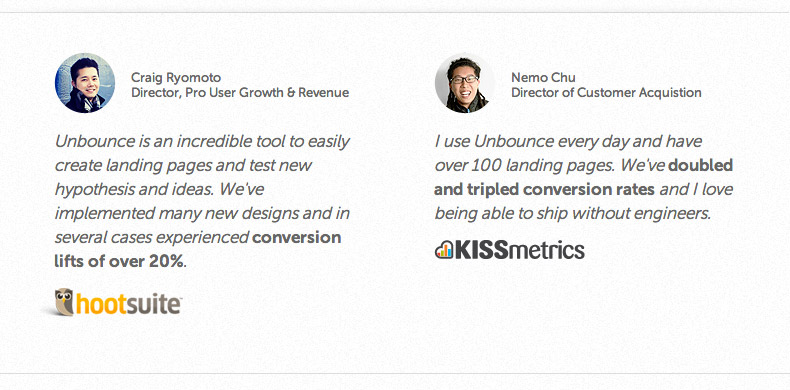
Good—but not as convincing as movement and voice.
And here’s page B, featuring a video:

The richer format helped more visitors say “yes.”
If you want inspiration and examples of strong testimonial pages, this HubSpot roundup is a solid place to start.
You’ll find a range of styles and formats to model.
Conclusion
At its core, a testimonial is simple:
It’s a formal, public statement from a real customer that speaks to a brand’s character, experience, and results.
Execution is where it’s won or lost. The right details (who, what, results, when), the right format (quote, story, or video), and the right context (placed near key calls to action) can make a dramatic difference.
Basic tactics help, but the approaches above maximize impact because they focus on authenticity and proof.
Use them to create testimonials your prospects can believe—and act on.
Do that well, and you’ll earn trust faster, remove objections earlier, and convert more visitors into customers.
